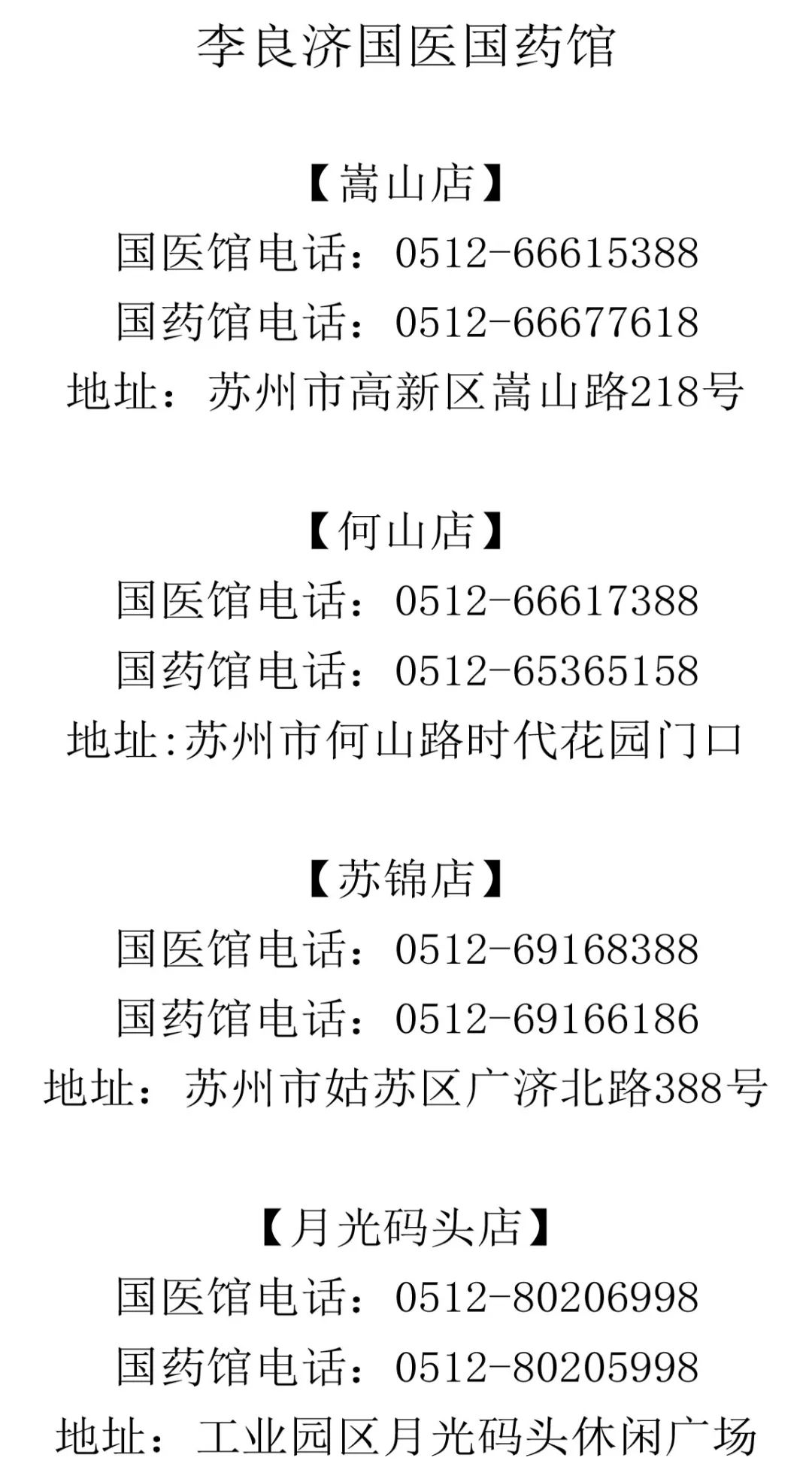In the early Tang Dynasty, the Medicine King Sun Simiao traveled with his disciples from Zhongnan Mountain to Qingcheng Mountain in Sichuan to collect medicinal herbs. One day, the master and his disciple rested in a forest of towering green pines. Suddenly, they saw a large female crane playing in the water with several yellow-billed chicks by a mountain stream.They heard the chicks squawking in alarm. The master and disciple looked and saw the female crane with its head and neck drooping, its legs trembling, and it was continuously crying out in distress. The Medicine King immediately understood that the crane was suffering from a sudden illness.The next morning, the Medicine King and his disciple returned to the pine forest. Not far from the crane’s nest, the moans of the sick crane were clearly audible.After a while, several white cranes descended slowly from the morning glow, dropping a few leaves from their beaks. The disciple picked one up and noticed it resembled carrot leaves, so he carelessly tossed it aside. However, the Medicine King treasured it and ordered his disciple to collect and preserve the leaves.One day later, the Medicine King and his disciple returned to the pine forest, and the moans of the sick crane were no longer heard. Looking up, they saw several white cranes soaring in the sky, dropping a small white flower from their beaks.The Medicine King again ordered his disciple to collect and preserve it. Days passed, and the Medicine King observed the sick female crane, which had completely recovered and was frolicking with the chicks as usual.He also noticed that the white cranes loved to visit the ancient caves on the sheer cliffs, where a lush green grass grew, and the flowers, leaves, and roots were the same as those that had fallen from the cranes’ beaks in the past.The Medicine King instinctively associated the crane’s recovery with this herb and decided to try it, discovering that its rhizome was bitter with a hint of spiciness and had a unique rich fragrance.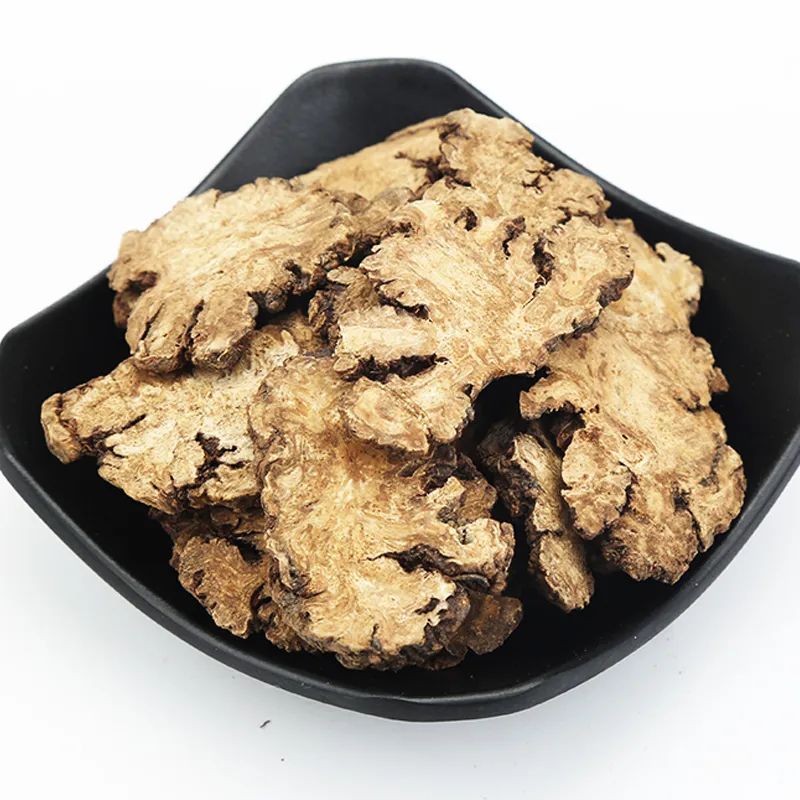 Based on years of experience, he concluded that this herb had the effects of invigorating blood circulation, regulating Qi, dispelling wind, and alleviating pain, so he instructed his disciple to take this herb down the mountain to treat patients according to their symptoms, and it proved to be effective.The Medicine King excitedly recited: “Qingcheng is the most serene in the world, the first cave in western Sichuan. Where the immortal cranes pass, good medicine descends from the heavens. This herb shall be called ‘Chuanxiong’!” From then on, “Chuanxiong” was named as such.Historically, Chuanxiong was produced in many places. Since the Song Dynasty, the people of Sichuan mastered the technique of cultivating high-quality Chuanxiong, and the quality of the herbs they produced was superior and authentic, leading to a gradual decline in the use of Chuanxiong from other regions. Chuanxiong developed into a local medicinal material of Sichuan, hence its name.1Chuanxiong, also known as Sanjueqiong or Xiongfu, is the dried rhizome of the plant Ligusticum chuanxiong, belonging to the Apiaceae family. It has the effects of invigorating blood circulation, regulating Qi, dispelling wind, and alleviating pain.It is mainly used for chest pain, stabbing pain in the chest and hypochondria, swelling and pain from falls, irregular menstruation, dysmenorrhea, abdominal pain from masses, headaches, and rheumatic pain.Chuanxiong is recorded in the Shennong Bencao Jing as a top-grade herb, “mainly for wind stroke entering the brain, headaches, cold bi syndrome, muscle spasms, acute pain, traumatic injuries, and women’s blood stagnation, infertility.”
Based on years of experience, he concluded that this herb had the effects of invigorating blood circulation, regulating Qi, dispelling wind, and alleviating pain, so he instructed his disciple to take this herb down the mountain to treat patients according to their symptoms, and it proved to be effective.The Medicine King excitedly recited: “Qingcheng is the most serene in the world, the first cave in western Sichuan. Where the immortal cranes pass, good medicine descends from the heavens. This herb shall be called ‘Chuanxiong’!” From then on, “Chuanxiong” was named as such.Historically, Chuanxiong was produced in many places. Since the Song Dynasty, the people of Sichuan mastered the technique of cultivating high-quality Chuanxiong, and the quality of the herbs they produced was superior and authentic, leading to a gradual decline in the use of Chuanxiong from other regions. Chuanxiong developed into a local medicinal material of Sichuan, hence its name.1Chuanxiong, also known as Sanjueqiong or Xiongfu, is the dried rhizome of the plant Ligusticum chuanxiong, belonging to the Apiaceae family. It has the effects of invigorating blood circulation, regulating Qi, dispelling wind, and alleviating pain.It is mainly used for chest pain, stabbing pain in the chest and hypochondria, swelling and pain from falls, irregular menstruation, dysmenorrhea, abdominal pain from masses, headaches, and rheumatic pain.Chuanxiong is recorded in the Shennong Bencao Jing as a top-grade herb, “mainly for wind stroke entering the brain, headaches, cold bi syndrome, muscle spasms, acute pain, traumatic injuries, and women’s blood stagnation, infertility.”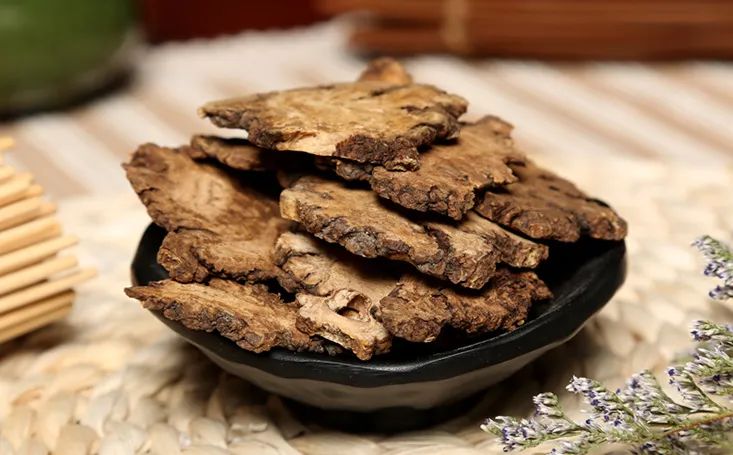 The Bencao Gangmu: Chuanxiong is a Qi herb in the blood. The liver suffers from urgency, so it is supplemented with spiciness, thus it is suitable for those with blood deficiency. The spiciness disperses, so it is suitable for those with Qi stagnation. If blood dysentery has been resolved but pain persists, it indicates Yin deficiency and Qi stagnation; adding Chuanxiong as an assistant herb will promote Qi circulation and regulate blood, and the condition will stop immediately.2The Chuanxiong herb appears as irregular, nodular, fist-shaped clumps, with a yellow-brown or brown surface, rough and wrinkled, with many parallel raised nodes, and a depressed round stem scar at the top, with many small tuberous root scars on the underside and nodes.It has a strong aromatic scent, a bitter and spicy taste, with a slight numbing sensation on the tongue and a mild sweetness. The best quality is characterized by large size, firm texture, a yellow-white cross-section, high oil content, and strong aroma.
The Bencao Gangmu: Chuanxiong is a Qi herb in the blood. The liver suffers from urgency, so it is supplemented with spiciness, thus it is suitable for those with blood deficiency. The spiciness disperses, so it is suitable for those with Qi stagnation. If blood dysentery has been resolved but pain persists, it indicates Yin deficiency and Qi stagnation; adding Chuanxiong as an assistant herb will promote Qi circulation and regulate blood, and the condition will stop immediately.2The Chuanxiong herb appears as irregular, nodular, fist-shaped clumps, with a yellow-brown or brown surface, rough and wrinkled, with many parallel raised nodes, and a depressed round stem scar at the top, with many small tuberous root scars on the underside and nodes.It has a strong aromatic scent, a bitter and spicy taste, with a slight numbing sensation on the tongue and a mild sweetness. The best quality is characterized by large size, firm texture, a yellow-white cross-section, high oil content, and strong aroma. Generally, it is harvested in May, cleaned of dirt, sun-dried, and then dried again, removing the fibrous roots. The common processing methods for Chuanxiong are as follows:1. ChuanxiongTake the raw herb, remove impurities, separate by size, soak until partially translucent, wash clean, moisten until translucent, slice thinly, and dry or low-temperature dry.2. Wine ChuanxiongTake clean Chuanxiong slices, mix with yellow wine, moisten thoroughly, stir-fry in a pot over low heat until dry, then cool. For every 100 kg of Chuanxiong, use 10 kg of yellow wine.3. Fried ChuanxiongTake clean Chuanxiong slices, place in a pot, and stir-fry over low heat until yellow or slightly charred, then cool.
Generally, it is harvested in May, cleaned of dirt, sun-dried, and then dried again, removing the fibrous roots. The common processing methods for Chuanxiong are as follows:1. ChuanxiongTake the raw herb, remove impurities, separate by size, soak until partially translucent, wash clean, moisten until translucent, slice thinly, and dry or low-temperature dry.2. Wine ChuanxiongTake clean Chuanxiong slices, mix with yellow wine, moisten thoroughly, stir-fry in a pot over low heat until dry, then cool. For every 100 kg of Chuanxiong, use 10 kg of yellow wine.3. Fried ChuanxiongTake clean Chuanxiong slices, place in a pot, and stir-fry over low heat until yellow or slightly charred, then cool.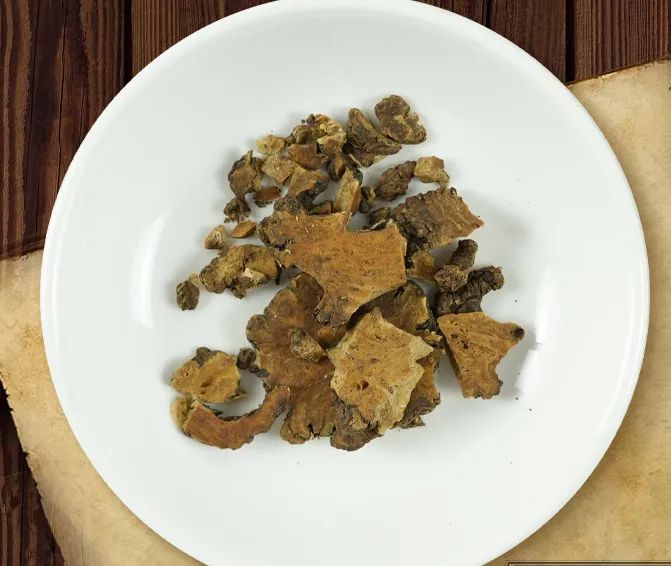 4. Wheat bran fried ChuanxiongHeat the pot, sprinkle wheat bran until it smokes, then add Chuanxiong slices and stir-fry until deep yellow, remove, sift out the bran, and cool. For every 100 kg of Chuanxiong slices, use 18 kg of wheat bran.Raw Chuanxiong has a strong spicy and aromatic nature, adept at invigorating blood circulation, regulating Qi, dispelling wind, and alleviating pain, primarily treating various pain syndromes caused by blood stasis and Qi stagnation;Wine Chuanxiong can enhance the upward movement of the herb and strengthen its effects of invigorating blood circulation, regulating Qi, and alleviating pain, commonly used clinically for headaches due to Qi stagnation and blood stasis, chest and hypochondriac pain, dysmenorrhea, and pain from injuries and musculoskeletal pain.3In TCM treatment, Chuanxiong is generally used in combination with the following herbs:1. Chuanxiong with WuyaoChuanxiong is warm and aromatic, capable of ascending and descending, moving upward to the vertex and downward to the blood sea, being a Qi herb in the blood, effective in invigorating blood; Wuyao is warm and aromatic, moving upward to the spleen and lungs, and downward to the liver and kidneys, with the function of regulating Qi, dispelling cold, and alleviating pain, focusing more on Qi movement.When combined, these two herbs work together to invigorate blood, resolve stasis, and regulate Qi to alleviate pain.It is suitable for menstrual irregularities, dysmenorrhea, and amenorrhea caused by Qi stagnation and blood stasis.2. Chuanxiong with DangguiChuanxiong is warm and dry, focusing on invigorating blood and regulating Qi; Danggui is sweet and nourishing, with a moist and greasy quality, focusing on nourishing and harmonizing blood.
4. Wheat bran fried ChuanxiongHeat the pot, sprinkle wheat bran until it smokes, then add Chuanxiong slices and stir-fry until deep yellow, remove, sift out the bran, and cool. For every 100 kg of Chuanxiong slices, use 18 kg of wheat bran.Raw Chuanxiong has a strong spicy and aromatic nature, adept at invigorating blood circulation, regulating Qi, dispelling wind, and alleviating pain, primarily treating various pain syndromes caused by blood stasis and Qi stagnation;Wine Chuanxiong can enhance the upward movement of the herb and strengthen its effects of invigorating blood circulation, regulating Qi, and alleviating pain, commonly used clinically for headaches due to Qi stagnation and blood stasis, chest and hypochondriac pain, dysmenorrhea, and pain from injuries and musculoskeletal pain.3In TCM treatment, Chuanxiong is generally used in combination with the following herbs:1. Chuanxiong with WuyaoChuanxiong is warm and aromatic, capable of ascending and descending, moving upward to the vertex and downward to the blood sea, being a Qi herb in the blood, effective in invigorating blood; Wuyao is warm and aromatic, moving upward to the spleen and lungs, and downward to the liver and kidneys, with the function of regulating Qi, dispelling cold, and alleviating pain, focusing more on Qi movement.When combined, these two herbs work together to invigorate blood, resolve stasis, and regulate Qi to alleviate pain.It is suitable for menstrual irregularities, dysmenorrhea, and amenorrhea caused by Qi stagnation and blood stasis.2. Chuanxiong with DangguiChuanxiong is warm and dry, focusing on invigorating blood and regulating Qi; Danggui is sweet and nourishing, with a moist and greasy quality, focusing on nourishing and harmonizing blood.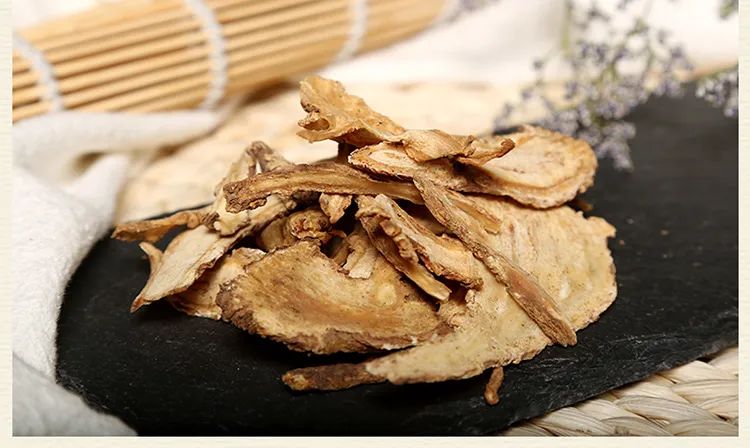 When combined, these two herbs work together to invigorate blood, nourish blood, and regulate Qi, achieving a balance of moistening dryness and preventing the depletion of Qi and blood, nourishing blood without causing blood stagnation and Qi stagnation, thus achieving the effects of invigorating blood, dispelling stasis, nourishing blood, and harmonizing blood.It is suitable for headaches due to blood deficiency and stasis, menstrual irregularities, dysmenorrhea, amenorrhea, postpartum abdominal pain from stasis, and rheumatic pain.3. Chuanxiong with BaishaoChuanxiong is warm and aromatic, invigorating blood and regulating Qi, focusing on ascending and dispersing; Baishao is slightly bitter and sour, nourishing blood and astringing Yin, focusing on astringing.When combined, these two herbs balance invigorating blood and nourishing blood, promoting liver function and softening the liver, allowing for the dispelling of stasis without harming the righteous Qi, and promoting liver Qi without damaging liver Yin.It is suitable for menstrual irregularities and amenorrhea caused by liver blood or liver Yin deficiency, and for chest and hypochondriac distension and pain due to liver Qi stagnation and blood stasis, as well as dysmenorrhea.4In the eyes of ancient physicians, Chuanxiong was a frequently used medicinal herb, thus leaving behind many classic formulas containing Chuanxiong.1. Chaihu Shugan SanComposition: Chenpi (vinegar-fried) and Chaihu, each 2 qian (6g), Chuanxiong, Zhike (wheat bran-fried), and Baishao, each 1.5 qian (4.5g), Gancao (honey-fried) 5 fen (1.5g), Xiangfu 1.5 qian (4.5g).Usage: Boil with 1.5 bowls of water until 8 parts remain (2.5g), take before meals (modern usage generally involves decocting in water).It disperses liver Qi and alleviates stagnation, regulates Qi, and alleviates pain. It is used for liver Qi stagnation syndrome, characterized by rib pain, chest tightness, emotional depression or irritability, belching, abdominal distension, and wiry pulse.This formula is a representative formula for treating liver Qi stagnation syndrome, with rib pain and wiry pulse as key diagnostic points. However, this formula’s properties are aromatic, spicy, and dry, so it should not be boiled for long; it can easily deplete Qi and injure Yin, and should be used cautiously in pregnant women.
When combined, these two herbs work together to invigorate blood, nourish blood, and regulate Qi, achieving a balance of moistening dryness and preventing the depletion of Qi and blood, nourishing blood without causing blood stagnation and Qi stagnation, thus achieving the effects of invigorating blood, dispelling stasis, nourishing blood, and harmonizing blood.It is suitable for headaches due to blood deficiency and stasis, menstrual irregularities, dysmenorrhea, amenorrhea, postpartum abdominal pain from stasis, and rheumatic pain.3. Chuanxiong with BaishaoChuanxiong is warm and aromatic, invigorating blood and regulating Qi, focusing on ascending and dispersing; Baishao is slightly bitter and sour, nourishing blood and astringing Yin, focusing on astringing.When combined, these two herbs balance invigorating blood and nourishing blood, promoting liver function and softening the liver, allowing for the dispelling of stasis without harming the righteous Qi, and promoting liver Qi without damaging liver Yin.It is suitable for menstrual irregularities and amenorrhea caused by liver blood or liver Yin deficiency, and for chest and hypochondriac distension and pain due to liver Qi stagnation and blood stasis, as well as dysmenorrhea.4In the eyes of ancient physicians, Chuanxiong was a frequently used medicinal herb, thus leaving behind many classic formulas containing Chuanxiong.1. Chaihu Shugan SanComposition: Chenpi (vinegar-fried) and Chaihu, each 2 qian (6g), Chuanxiong, Zhike (wheat bran-fried), and Baishao, each 1.5 qian (4.5g), Gancao (honey-fried) 5 fen (1.5g), Xiangfu 1.5 qian (4.5g).Usage: Boil with 1.5 bowls of water until 8 parts remain (2.5g), take before meals (modern usage generally involves decocting in water).It disperses liver Qi and alleviates stagnation, regulates Qi, and alleviates pain. It is used for liver Qi stagnation syndrome, characterized by rib pain, chest tightness, emotional depression or irritability, belching, abdominal distension, and wiry pulse.This formula is a representative formula for treating liver Qi stagnation syndrome, with rib pain and wiry pulse as key diagnostic points. However, this formula’s properties are aromatic, spicy, and dry, so it should not be boiled for long; it can easily deplete Qi and injure Yin, and should be used cautiously in pregnant women.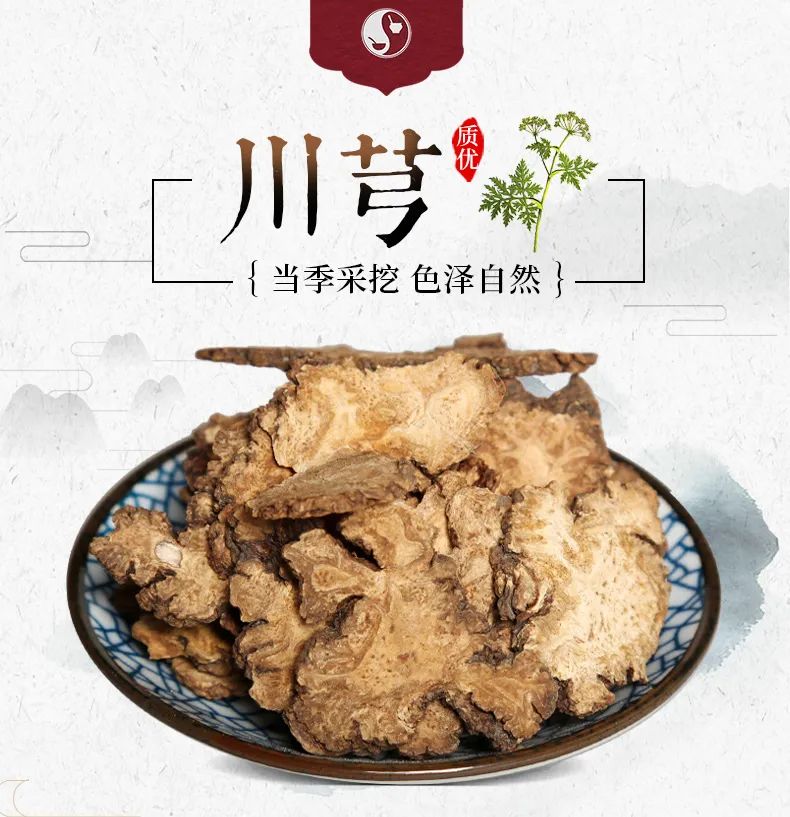 2. Tongqiao Huoxue TangThis formula is from Yilin Gai Cuo.Composition: Chishao and Chuanxiong, each 1 qian (3g), Taoren (crushed) and Honghua, each 3 qian (9g), Lao Cong (chopped) 3 roots (6g), fresh ginger (chopped) 3 qian (9g), red dates (pitted) 7 (5g), musk in silk bag 5 li (0.15g), yellow wine 0.5 jin (250g).Boil the first seven ingredients in 1 bowl of water, strain, then add musk to the wine, boil again until it bubbles, and take before bed.It invigorates blood and opens the orifices. It is used for headaches and dizziness due to blood stasis obstructing the head and face, or long-term deafness, hair loss, facial cyanosis, rosacea, vitiligo, as well as women with blood deficiency, and children with malnutrition showing muscle wasting, abdominal distension with visible veins, tidal fever, dark red tongue, or with purplish spots.3. Chuanxiong SanChuanxiong Tea Powder is derived from Taiping Huimin Heji Ju Fang.Composition: Bohe leaves (not fire-dried) 8 liang (12g), Chuanxiong and Jingjie (stems removed), each 4 liang (12g), Xixin (stems removed) 1 liang (3g), Fangfeng (stems removed) 1.5 liang (4.5g), Baizhi, Qianghuo, and Gancao, each 2 liang (6g).Usage: Grind into a fine powder, take 2 qian (6g) after meals, mixed with clear tea (modern usage: grind into a fine powder, take 6g twice daily after meals; it can also be made into a decoction).It disperses wind and alleviates pain. It is used for headaches caused by external wind invasion, either for frontal or vertex headaches, with chills and fever, dizziness, nasal congestion, thin white tongue coating, and floating pulse.
2. Tongqiao Huoxue TangThis formula is from Yilin Gai Cuo.Composition: Chishao and Chuanxiong, each 1 qian (3g), Taoren (crushed) and Honghua, each 3 qian (9g), Lao Cong (chopped) 3 roots (6g), fresh ginger (chopped) 3 qian (9g), red dates (pitted) 7 (5g), musk in silk bag 5 li (0.15g), yellow wine 0.5 jin (250g).Boil the first seven ingredients in 1 bowl of water, strain, then add musk to the wine, boil again until it bubbles, and take before bed.It invigorates blood and opens the orifices. It is used for headaches and dizziness due to blood stasis obstructing the head and face, or long-term deafness, hair loss, facial cyanosis, rosacea, vitiligo, as well as women with blood deficiency, and children with malnutrition showing muscle wasting, abdominal distension with visible veins, tidal fever, dark red tongue, or with purplish spots.3. Chuanxiong SanChuanxiong Tea Powder is derived from Taiping Huimin Heji Ju Fang.Composition: Bohe leaves (not fire-dried) 8 liang (12g), Chuanxiong and Jingjie (stems removed), each 4 liang (12g), Xixin (stems removed) 1 liang (3g), Fangfeng (stems removed) 1.5 liang (4.5g), Baizhi, Qianghuo, and Gancao, each 2 liang (6g).Usage: Grind into a fine powder, take 2 qian (6g) after meals, mixed with clear tea (modern usage: grind into a fine powder, take 6g twice daily after meals; it can also be made into a decoction).It disperses wind and alleviates pain. It is used for headaches caused by external wind invasion, either for frontal or vertex headaches, with chills and fever, dizziness, nasal congestion, thin white tongue coating, and floating pulse. 5In daily life, Chuanxiong can be used for dietary therapy; here are a few commonly used medicinal dishes:1. Astragalus and Chuanxiong PorridgeIngredients: Astragalus 30g, Chuanxiong 5g, Sand Ginger 5g, Sangjisheng 10g, Japonica rice 10g.Method: Boil Astragalus, Chuanxiong, Sand Ginger, and Sangjisheng to extract the juice, then wash the Japonica rice and cook it with the medicinal juice until it becomes thick porridge.Usage: Take in three portions daily, warm.2. Four Substance Stewed Black ChickenIngredients: One black chicken, Shudihuang 12g, Baishao 12g, Chuanxiong 8g, Danggui 10g, ginger to taste, salt to taste.Method: Clean and drain the ingredients. Place them in a clay pot, add appropriate water, boil over high heat until boiling, then simmer for 1-2 hours. Add salt to taste before serving.
5In daily life, Chuanxiong can be used for dietary therapy; here are a few commonly used medicinal dishes:1. Astragalus and Chuanxiong PorridgeIngredients: Astragalus 30g, Chuanxiong 5g, Sand Ginger 5g, Sangjisheng 10g, Japonica rice 10g.Method: Boil Astragalus, Chuanxiong, Sand Ginger, and Sangjisheng to extract the juice, then wash the Japonica rice and cook it with the medicinal juice until it becomes thick porridge.Usage: Take in three portions daily, warm.2. Four Substance Stewed Black ChickenIngredients: One black chicken, Shudihuang 12g, Baishao 12g, Chuanxiong 8g, Danggui 10g, ginger to taste, salt to taste.Method: Clean and drain the ingredients. Place them in a clay pot, add appropriate water, boil over high heat until boiling, then simmer for 1-2 hours. Add salt to taste before serving.
END
For more health products, please visit the official flagship store.Disclaimer: This article is compiled from the internet for learning and reference purposes only and cannot replace medical advice and prescriptions. Please use under the guidance of a physician. The sharing aims to disseminate health science knowledge, and any objections will be handled by deletion.Tips:1. If you have any questions, you can add Li Liangji Health Consultant (Liangji Jun) on WeChat, send us your questions, and we will reply to you as soon as possible to help you!
